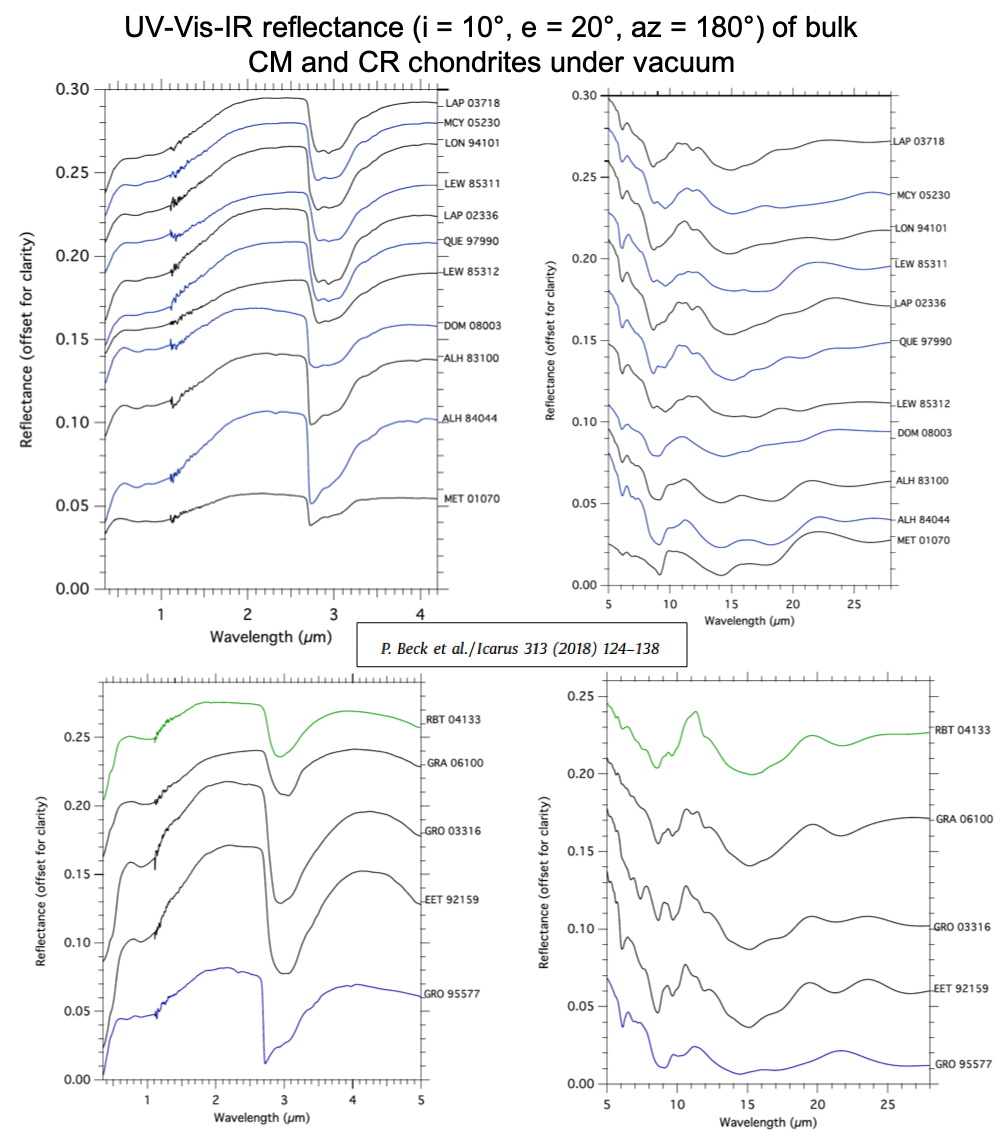- Title
- UV-Vis-IR reflectance spectra (i=10°, e=20°, az=180°) of bulk CM and CR chondrites under vacuum
- DOI
- 10.26302/SSHADE/EXPERIMENT_LB_20200108_001
- Data reference
- Beck, Pierre; Garenne, Alexandre; Maturilli, Alessandro (2017): UV-Vis-IR reflectance spectra (i=10°, e=20°, az=180°) of bulk CM and CR chondrites under vacuum. SSHADE/GhoSST (OSUG Data Center). Dataset/Spectral Data. https://doi.org/10.26302/SSHADE/EXPERIMENT_LB_20200108_001
- Publications
- Database(s)
- Experimentalists
- Type(s)
- laboratory measurement
- Description
- UV-Vis-IR reflectance spectra (i=10°, e=20°, az=180°) of bulk CM and CR chondrites under vacuum
- Number of spectra
- 23
- Variable type(s)
-
- sample composition
- Laboratory
- Planetary Emissivity Laboratory (PEL)
- Instrument
- Brucker Vertex 80V - UV-Vis-IR reflection
- Sample holder
- open sample holder (3mm diameter, 1 mm deep) in anodized aluminum
- Standard medium
- vacuum
- Observation mode
- spectrum
- Spectral range type(s)
- UV, Vis, NIR, MIR, FIR
- Valid spectral range(s)
-
Min - Max (${\mu}m$) Sampling (${\mu}m$) Resolution (${\mu}m$) Position accuracy (${\mu}m$) Absorption edge #1 0.3 - 0.5 2.4e-05 #2 0.5 - 1.1 #3 1.1 - 200.0 - Comments
- Measured over the 0.25 to 200 μm range with constant resolution and sampling in cm-1 (FTIR). Sampling of 0.024 nm from 0.25 to 0.50 µm, and 0.964 cm-1 (0.025 nm to 4 µm) between 0.5 and 200µm
Definition: incidence and emergence angles are positive with origin at nadir, and vary in same direction. Azimuth origin (increasing clockwise) is for i = e (opposition geometry).
- Observation geometry
- bidirectional
- Observation mode
- fixed angles
- Incidence angle
- 10.0°
- Emergence angle
- 20.0°
- Azimuth angle
- 180.0°
- Phase angle
- 30.0°
- Observation mode
- single spot
- Image size
- 3.0 x 3.0 $mm$
- Date begin
- 2017-07-01
Versions
- Release date
- 2020-01-08 13:10:53+0000 UTC
- Version (Date)
- #1 (2020-01-08 13:10:53+0000 UTC, Updated: 2020-01-23 09:11:54+0000 UTC)
- Sponsors
-
- European Commission - Horizon 2020-RI (EC-H2020) (EPN2020-RI: Europlanet 2020 Research Infrastructure, grant No 654208 (TA2/DPSF/PEL))
